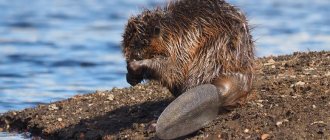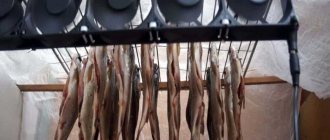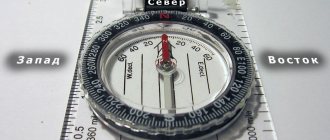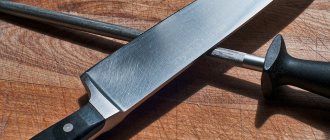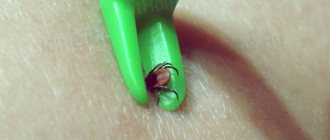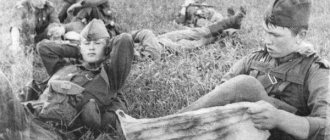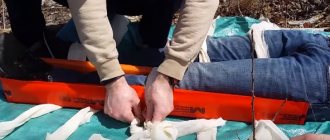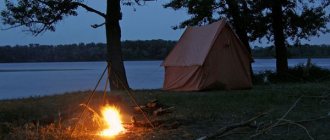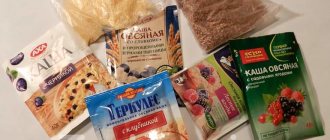Skinning
In order to properly cut a hare, it is necessary to strictly follow the sequence of actions. Initially, you should remove the skin from the carcass; to do this, you should hang the prey by the hind legs, since in this position it will be much easier to do it.
The process of skinning a wild hare consists of several stages:
- The skin is cut in a circle, starting from the hind legs, just below the knee joint.
- From the cut along the inside, the skin is trimmed to the anus.
- The skin in the anus area is cut off with a knife, after which it should be removed from the tail and hind legs.
- Next, the skin is very carefully removed downwards, while the tendons are trimmed with a knife.
- To ensure that the paws remain in the skin, the hare's front paws are freed from the skin and cut at the joint.
- To remove the skin from the head, you need to cut the ears at the base and continue to remove it downwards, cutting around the eyes.
Experienced chefs recommend leaving the carcass hanging for several days (or even weeks) in a well-ventilated, cold room so that the meat “cooks” and acquires a more piquant and refined taste. If there are a lot of shots, then the game must be skinned and gutted, and if the carcass is not badly damaged, it can be left hanging for a while without pre-treatment.
Cutting elk, wild boar, hare
Being in autonomous conditions, for your survival you may have to hunt and catch animals, since it is very difficult, and rather simply impossible, to survive by gathering alone, especially in winter, because you need calories, calories and again calories, and There are not many of them in the pasture. Catching an animal or fish is half the battle; it still needs to be properly processed before cooking or storing it for a long time.
Skinning and butchering elk
After you have shot an animal with ungulates, such as a moose, you need to properly skin and butcher it. To do this, you need to cut the throat to release the blood and make sure that the animal is dead.
Next, you need to cut up the carcass as quickly as possible so that the jar does not spoil. To remove the skin, the carcass is laid on its back, the legs are secured with ropes and circular cuts are made around the knee joints. Next, a cut is made from the larynx to the tip of the tail through the sternum and belly and connected to the cuts on the knees. Then they rip off the skin by trimming it and pushing their fists under it. Remove the skin from both sides as long as it is convenient, then lay it on one side, remove the skin up to the spine, and then from the other side and separate it completely. Skinning an elk
Video - skinning and cutting up an elk
The carcass is butchered directly on the skin. First, the legs are cut off, then the sternum is cut off at the cartilaginous connections with the ribs. Next, they cut open the belly and roll the carcass on its side so that the internal organs fall out. Next, the esophagus and trachea are cut off and pulled into the chest. Then, by pulling the esophagus and cutting the ligaments, the internal organs are separated. If you eat internal organs, they should be examined. For example, translucent bubbles the size of a walnut, hanging from a “string” to the internal organs, indicate the presence of helminths. Such innards must be destroyed to prevent them from being eaten by predators and becoming infected with this form of tape parasite. The best way to do this is to leave the insides at the cutting site, throw some branches and light a fire, because only fire effectively destroys all parasites.
In severe frost, each part of the carcass is placed separately so that the parts do not freeze. You can also use snow to clean the blood from the cut parts. The carcass is folded into an envelope with the fur facing out, so the skin freezes gradually. It is better not to chop the carcass, but to cut it at the joints, as the northern peoples do.
Skinning and cutting up a boar
Boar can be cut vertically and horizontally. It is more convenient and easier to cut a wild boar in a vertical suspension, if it is possible to hang the carcass. First, let's look at the vertical cutting method. First, the skin is removed from the carcass in the same way as from an elk, cutting with a knife and pushing your fists under the skin. Next, the head and limbs are separated, then the carcass is lifted on a winch or rope, it all depends on the capabilities and weight of the boar. The esophagus and duodenum are ligated, then the esophagus is cut below the ligation, and the duodenum is cut between the ligations, as a result of which the stomach along with the intestines itself falls out of the peritoneum, without contaminating the meat.
Video - skinning and cutting a boar
If it is not possible to cut the boar in a vertical position, you will have to cut it horizontally. To do this, choose a dry place with grass, or lay down branches. Separate the head and legs, remove the skin, for which you cut it along the white line of the belly and chest. After skinning the boar, further cutting of the carcass is best done on the skin itself to minimize its contamination. The esophagus must be ligated and cut. Next, you cut into the abdomen, cut the tissue of the diaphragm that holds the esophagus, and pull it into the abdominal cavity. By pulling the intestines and other internal organs by the esophagus, cutting off their attachment points, but without damaging the organs themselves, they are pulled out. Next, you need to remove the heart and lungs by cutting into the chest or cutting off the diaphragm. Now all that remains is to divide the boar carcass itself. The type of meat you get depends on the correct cutting of the boar, because incorrect cutting can spoil the very taste and smell of the meat, because only the meat of a male wild boar during the rutting period has an unpleasant taste and smell.
Skinning and butchering a hare
The principle of skinning a hare is similar to skinning an elk. The hare is suspended by its hind legs in a vertical position. Next, circular cuts are made on the ankles below the knee joints and the skin is trimmed from the inside of the legs, starting from the circular cuts to the anus. Using trimming movements, the skin is separated from the meat of the legs and at the site of the hare's anus, the large intestine is pulled out, cut, after which the skin is carefully torn off with both hands, helping oneself with a knife to the front joints, the legs are cut and remain inside. The skin of the hare is removed from the head. if you cut the ears at the base and make cuts near the eyes.
In the same vertical position, a neat incision is made in the abdomen and sternum, and the intestines with internal organs fall out on their own, after which they need to be separated from the spine. The hare's anus must be cut deeply.
Video - how to skin and butcher a hare
Comments
0 Shelma 02/23/2015 1:28 pm It really helped, guys! Only with 2 hares A 1 didn’t work out - I accidentally cut the skin deeper than necessary: as a result, the meat was damaged and it went rotten. But then I cut out a (quite substantial) portion of the meat from the dried carcass and ate it.
Quote
+1 falconmet 07/18/2012 21:32 thank you, it helped. in principle, nothing complicated. the main thing is a sharp knife and be careful with the intestines
Quote
0 Sergey564645654 04/19/2012 06:05 poor bunny, and the operator (as an operator) is a loser - not a damn thing is visible
Quote
Update list of comments RSS feed of comments for this entry
Add a comment
Taste characteristics of wild hare
The tastiest hare is the one that has eaten its fill of mountain food; next in terms of taste are the hares that live in the lowlands (forests, valleys, steppes), and the least tastier are the hares that live in swampy areas.
The best period for shooting wild hare is autumn and winter . Shooting an animal from September to March, you can hope for an excellent taste of the prey, but they are most nourished in early autumn. The taste of a young hare is significantly different from the taste of an old one; the most delicious trophy is no older than one year.
It is quite easy to distinguish a young hare from an old one - a young hare has a thick and short neck, soft ears and front legs that are easily broken. Old individuals are much stronger, they have more muscles and veins, a more elongated silhouette and they are thinner.
Useful properties of hare meat
Hare meat is a delicacy; it is much richer in useful elements than the meat of domesticated animals. In terms of the content of healthy complex carbohydrates, the meat of this game is many times higher than beef, pork and lamb.
According to the classification, this meat is classified as white, although it has a reddish tint, it contains a fairly large number of films and veins.
Expert opinion
Tarasov Dmitry Timofeevich
Master of Sports in mountaineering. Author of scientific articles on the topic of survival in the wild
Hare meat is also well known for its dietary properties. Meat is the leader due to its sufficient amount of protein, low fat content and lack of cholesterol.
The meat contains a lot of vitamins: phosphorus, potassium, calcium, magnesium, PP vitamins and has an excellent taste, and preparing dishes from it is no more difficult than from any other type of meat.
Cooking tricks
Having understood the cutting methods, you can begin preparing the meat. The carcass needs to be chopped into pieces and washed with running water.
Hare meat, like any other game, is a rather specific product. Every experienced hunter knows that the delicious taste of a trophy can be fully revealed only if the carcass is soaked before cooking.
Thanks to this, it will become tender, soft and without an unpleasant odor.
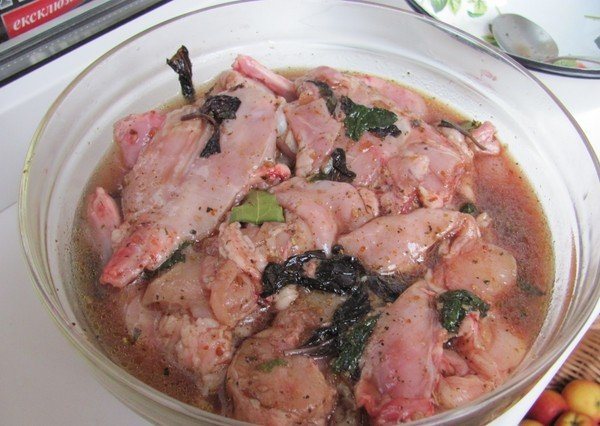
This can be done in plain cool water, changing it regularly, in whey, in water with vinegar, and you can also use a special marinade for wild hare. Moreover, according to nutritionists, it is better to prepare various dishes from a pre-cut carcass.
This is interesting: Rules of behavior and actions of the population under the threat of a terrorist attack
When washing, special attention should be paid to the pelvic bones, since in these places there are often intestinal remains with contents.
Cutting scheme
The carcass is cut into portioned pieces together with the fillet parts. Then their lean rabbit meat is used to prepare various dietary dishes. The cutting is carried out in stages.
The back part with the limbs is separated. The rabbit carcass is placed on the board so that the belly is at the bottom. The hind legs need to be spread out. They cut the flesh so that the knife reaches the bone, then use poultry scissors to break this bone.
The legs are correctly separated by cutting their tendons, starting from the center, at the location of the tail. An incision needs to be made where the shin and thigh joints meet. The cutting of the hind legs of large individuals is done in half, each leg is divided into 2 parts. In this case there will be 5 portioned pieces: one from the tail and four from the paws.
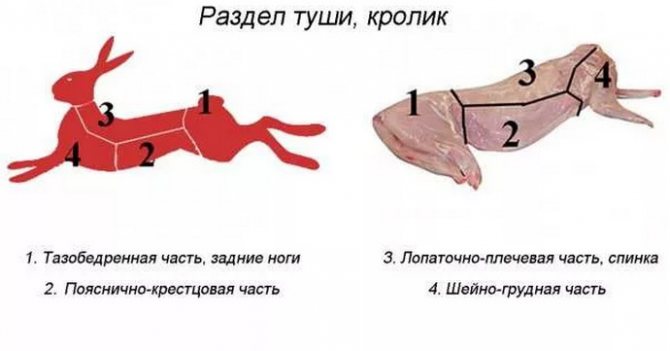
The separation of the front legs from the rabbit's body occurs easily; there are no bones where the forelimbs are attached to the body. It is better to cut large paws by dividing each paw in half to form a shoulder part with a forearm.
Before cutting the body, several cuts are made along the rabbit's spine, the distance between them should be about 4 centimeters. The carcass is divided into portions.
Then they cut out the heart and lung from the sternum. Having outlined several cuts, leaving a distance of 3 to 4 cm between them, divide the chest into pieces using a knife and scissors. The knife is only needed to cut through the spine. Parts of the meat on the ribs are separated from the spine. In total you will get from 5 to 7 pieces.
Tip: Cutting the ribs should be done along the soft meat between them. Smaller pieces will take less time to cook.
Sometimes, to prepare a culinary delight, only rabbit loins are required. From the remaining bones you can cook low-fat broth or soup, or stew.
The carcass is positioned so that the peritoneum is at the bottom. The front legs are trimmed. Then the belly fillet is cut from the carcass lying on its side or back.
Trimming soft tissue from a rabbit's body lying on its side should run along the back in the direction from the tail to the neck. Repeat the manipulations, shifting the carcass to the other side.
On the limbs, the meat is replete with tendons; if, when cutting it, you cut it off and use it to prepare a dish, you need to take into account that cooking time will take longer than if you prepare fillets from other parts of the rabbit. Having cut off the back of the carcass, separate the paws, dividing them in half.
The tendons are cut on the spine, with sharp movements of the hands back, the carcass is broken into 2 halves. Spread out, the carcass is placed on a cutting board. The rib bones with meat are separated along the ridge. Next, the resulting parts are cut into pieces with the spine and ribs.
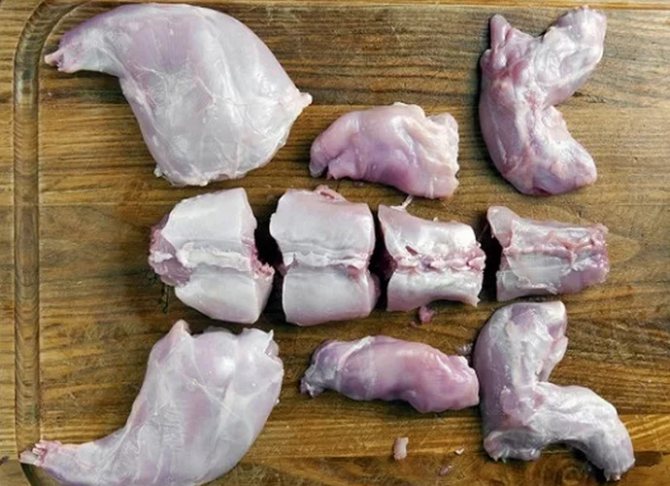
Beautiful and even pieces can be obtained by quick (express) cutting within a few minutes. The rabbit's butt is separated. The legs are divided into thighs and shins. Do the same with the front paws. The carcass is cut along the ridge from tail to neck. The carcass suddenly spreads out with his hands. The rabbit is then cut into pieces so that each piece is approximately 3 centimeters wide. Scissors will help break the vertebrae; they try to cut the ribs using soft tissue.
Tip: If the rabbit carcass was bought at a butcher shop and was frozen, it is better to thaw it by placing it in cool water and adding table vinegar (several large spoons).
The best marinades
There are several ways to marinate a hare:
- Whey is an excellent way to soak and marinate hare. After keeping the meat in this marinade for several hours, it will become very tender, and the specific smell will disappear;
- vinegar. It is recommended to use only wine vinegar in combination with spices. Vinegar and spices are added to the water to taste and the hare is marinated in this solution for at least 12 hours. The only drawback of this method is that the meat becomes much softer, but completely loses its natural flavor. Using this method, the meat must be thoroughly washed immediately before cooking;
- garlic and olive oil. This marinade is considered a classic; it is often used for marinating hare, which is cooked in the oven. One carcass requires a lot of garlic – 2-3 medium heads. This marinade can be made more piquant by adding various finely chopped herbs. The meat is rubbed with the mixture and sent to a cool place for several hours. Garlic will create a contrast of flavors, soften the meat and become an assistant when baking it;
- White wine. One of the best marinades. It quickly removes the specific smell, softens and flavors the meat. The result is a tender and tasty dish with beneficial properties and a pleasant aroma;
- spices. An integral part of this game. They are added at the marinating stage and immediately before cooking. There is a list of spices that give hare a unique taste: ground pepper, onion, salt, bay leaf. Also often used: basil, celery, parsley, dill, garlic, cinnamon, oregano, juniper berries, lemon and cloves.
A well-cooked hare is a wonderful reward for a hunter who has caught such valuable and tasty game.
The hare is a traditional game of central Russia ; hares are also found throughout Europe, the USA, Asia, almost everywhere. The hare is a desirable prey for every hunter, and the forests, fortunately, still abound in this type of game.
Of course, after catching the long-eared animal, it is necessary to bring the “hunting ritual” to a logical and tasty point - the animal must be cooked. There are nuances in preparing, skinning and cooking a hare that every hunter should know if he does not want to be disappointed in the benefits of his prey.
Preparatory work
Removing dirt and blood
Before you start dressing rabbit skins, they need to be cleaned of dirt. Sometimes during skinning the fur may become dirty. In this case, it is necessary to wash the skin in a freshly prepared solution. In a liter of water you need to dissolve 10 grams of soda ash and a 100 gram piece of laundry soap. It is necessary to “wash” each coat in the resulting mixture.
For one kilogram of raw materials you will have to use at least 4 liters of solution. The soap mixture should be warm, but not hot. The optimal temperature is 35-37 °C.
Soaking
This process takes from one to three days. The skins are placed under a weight in a saline solution (55 grams of table salt per liter of water). To prevent parasites from appearing or putrefactive processes to begin, antiseptics are added to the water.
Can be used:
- Formalin (1-1.1 grams per liter of water). Use with caution, as the substance is volatile and harmful to humans.
- Sodium bisulfite (2-2.5 grams per liter of water).
- Norsulfazole (2-3 tablets per liter).
The skins should soak and become soft to such a state that they can float freely in the thickness of the solution, but not float to its surface.
To determine the completion time of soaking, you need to pull out a few hairs from the groin area of the skin. If the fur comes out easily, the process can be considered complete.
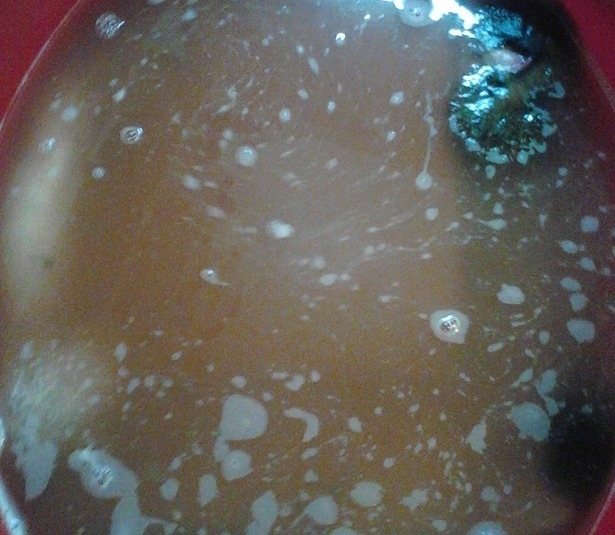
Flesh
The mezdra is a thin layer of subcutaneous fat and muscles that lift the hairs. All remaining meat must be completely removed. To do this, use a scraper or the back of a knife.
It is important to observe the direction of movement of the blade: from the tailbone to the head, from the center to the edges of the coat. It takes skill to make the skin thin and uniform in thickness over the entire area. The knife should be directed away from you, with short, slow movements.
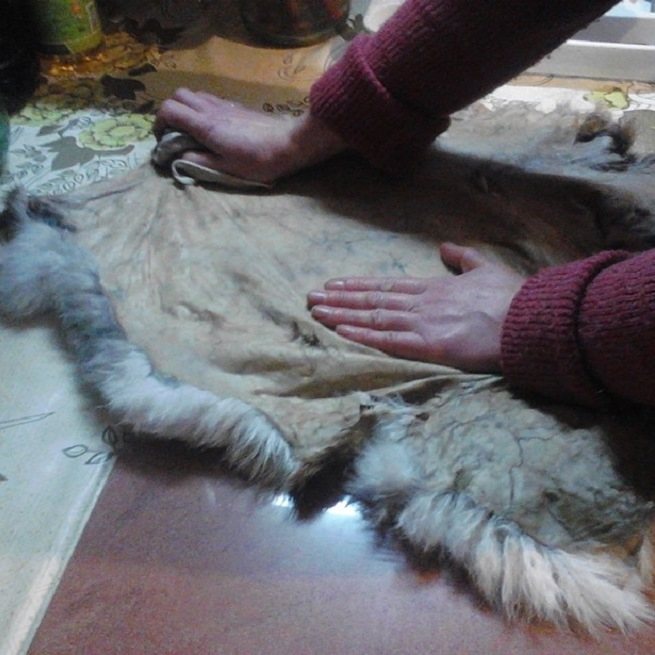
Degreasing
To completely remove fat, you need to prepare the following solution. Two grams of laundry soap or three grams of washing powder should be mixed with one gram of soda ash, then add everything to a liter of warm water. The skin must be kept in the solution for at least fifteen minutes and stirred periodically.
The next stage of degreasing is washing in a mixture of 0.5 grams of soda ash and 50 grams of table salt per liter of water. You need to let the liquid drain, then wipe the inside dry and pull the fur coat back onto the straightener.
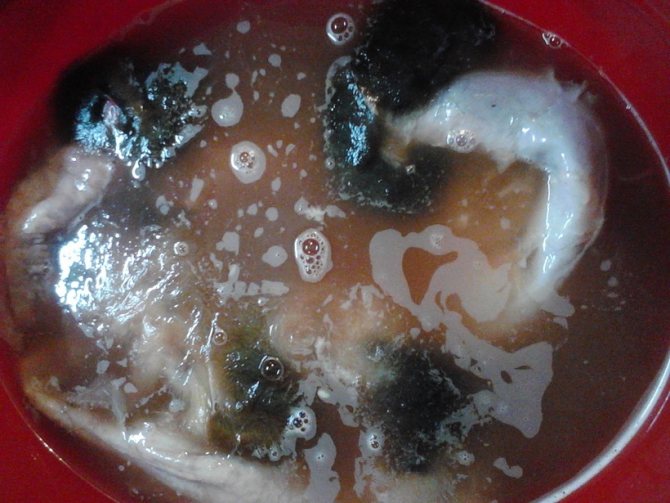
How to properly gut a hare
In order to gut the carcass, an incision is made from the pelvic bone to the sternum, the belly is opened and the entrails are taken out: the intestines are carefully laid out on paper, leaves, in a bag, cut out with the anus, being careful not to damage it. Next, the liver, heart, kidneys and lungs with larynx are selected. The offal is washed well to remove blood.
The gallbladder must be removed from the liver. If it is broken and bile has flooded the insides, they must be washed several times in running water, and then soaked for a long time, periodically changing the water.
You can cook a roast from the offal outdoors, or you can make the so-called gurka at home - sausage with rice (you can use boiled blood).
How to butcher a hare
After the hare has been skinned and gutted, it needs to be butchered. If you plan to cut it into portioned pieces, then it is better to do this at home, since it is much easier to cut a hare at home. If this is done to divide the spoils, then you can simply cut it in half along the spine.
Usually a hare is butchered in the following order:
- Separate the abdominal muscles from the saddle.
- The carcass is cut into two parts: the front part with the peritoneum and the saddle.
- The shoulder blades are separated.
- If necessary, separate the hind legs by cutting them along the sacrum.
The hind legs and saddle are considered the most delicious part. They are usually used for frying.
Home slaughterhouse equipment
Animal slaughter should be carried out in quiet, secluded places where outsiders do not have access. It is advisable to cover the floor and all objects in this place with paper, cardboard or film. The person who will perform necrosis must wear a protective apron, gloves or special protective clothing.
All killing actions must be performed quickly so that the rabbit does not experience pain or shock, otherwise it will negatively affect the taste of the meat.
Video Training video: Slaughtering rabbits at home in 1.5 minutes
Stages of processing a hare carcass
Before cutting, you need to empty the intestines of the prey from urine and feces. To do this, you need to hold the carcass with its head up and, pressing, move your hand down the stomach, lightly pressing.
The hare is skinned by hanging it from a branch by its hind legs. For bleeding, an incision is made in the neck or on the septum between the nostrils. The blood goes down into the ground or collects in a container. It can be boiled for dogs or made into blood sausage.
After bleeding, the skin is removed. This can be done in the following ways:
- cutting along the white line of the abdomen;
- by removing it with a tube.
The first method is more labor-intensive. The procedure for the second method is as follows:
- hang the hare and make cuts around the hock joints;
- cut the inside of the paws lengthwise towards the tail, remove the tail;
- cut the skin around the anus, remove it from the hind legs;
- the skin is removed from the front paws up to the wrist joint, it is cut and remains in the skin;
- To free the head, the cartilage at the base of the ears, eyes and nose is cut with a knife. The ear cartilages are cut out.
Expert opinion
Tarasov Dmitry Timofeevich
Master of Sports in mountaineering. Author of scientific articles on the topic of survival in the wild
The skins of several hares cannot be thrown on top of each other. In addition to contamination, they can stop or begin to rot, and this will lead to hair loss.
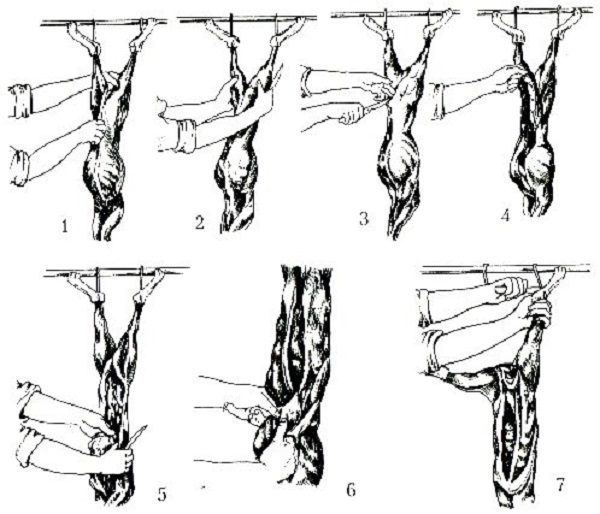
To gut a carcass, make an incision from the pelvis to the sternum, open the stomach, pull out the offal - the intestines with the anus, the lungs with the larynx, as well as the heart, kidneys and liver. The gallbladder is removed from the liver.
When cutting off the bladder, it is important to pinch the place where it is attached to the carcass with your fingers so that the remaining contents do not spill out. Before removing the intestines, experienced hunters advise pressing the droppings a few centimeters from the anus.
This way the droppings will not stain the meat. The offal is washed of blood.
This is interesting: Rules for providing first aid to victims on the water
You can cook a roast with them.
The hare meat should be washed in cold water until there is no blood in the water. Then the meat needs to be squeezed out and cut - separate the abdominal muscles from the kidney area, remove the shoulder blades, cut off the front part with the peritoneum and cut off the legs along the line of the sacrum.
Bleeding and flaying
After slaughter, a bleeding procedure is carried out. The rabbit carcass is hung by its hind legs over a container upside down to collect blood. Next, the head of the killed animal is cut off between the back of the head and the first cervical vertebra or the jugular veins are cut. Both methods work great to drain all the blood in less than 5 minutes. After bleeding, skinning is carried out - removing the skin from the body. You need to peel the skin while still warm so that it is smoother and it is easier to stretch it on the spacer.
Before skinning, you need to wash off the dirt and blood residue from the fur and comb the fur. They begin to skin the carcass from the hind legs using a sharpened knife. The fur near the hind legs is cut in a circle, then an incision is made from paw to paw in the center of the anus. The rabbit skin turned inward is slowly pulled down to the forelimbs. If areas of strong tendons and fatty deposits are found, they are carefully cut with a knife.
Then the hair near the front paws is carefully cut out. Be careful not to damage the fur. They also carefully cut out the skin around the eyes, nose, lips, and then completely remove it from the head. If the head was cut off during slaughter, then the skin is whitened and removed in the same way, but the last stage (cutting holes in the head) is no longer needed. After the rabbit has been skinned, its skin is stretched onto a pre-prepared spacer.
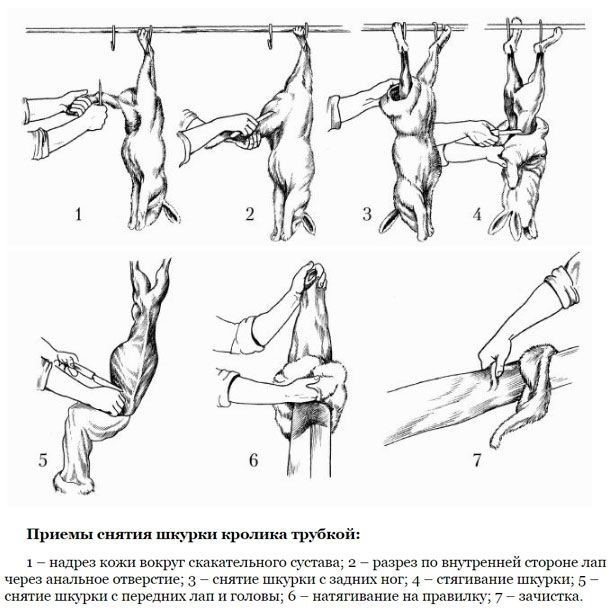
How to preserve the skin and prepare hare meat for consumption
- Dry salted method. Sprinkle the flesh and rub with plenty of salt, leave for five days. The skin is stretched on spacers; if folded, it will begin to rot. Then the salt is shaken off, and the skin is sent to dry for 10 days.
- Wet salt method. The skin is washed many times to remove blood, wrung out and soaked for 7-10 days in a saline solution. The solution is made at the rate of 7-8 liters per hare. Then the fur is washed, degreased and dried.
Hare meat has a peculiar taste and smell, which can be eliminated by simply soaking the hare in water for 5-6 hours. The water should be changed two or three times during this time. After soaking, the smell will disappear and the meat will become lighter in color. Marinate the soaked hare and cook!
Hare is a dietary meat, and in order for the dish to taste great, it is important to know how to properly cut a hare. Then the hunter’s triumph will be supplemented by the gastronomic pleasure of a gourmet who has tasted tasty and tender game.
All hunters will need information on how to properly dress a hare at home and while hunting - tips and techniques. Useful videos.
Disposal and Sanitation
Special sanitary treatment after slaughter and cutting is carried out only by large production farms in accordance with approved orders of the sanitary service and the established Standard (GOST 27747-2016 - work with rabbit meat). At home, when slaughtering, simply adhere to generally accepted rules of hygiene:
- The cut up carcass is washed in water and burned with a blowtorch.
- The cut rabbit meat is stored in the refrigerator.
- The skins are processed according to the rules that are recommended for dressing.
- Blood, guts and other unnecessary remains are thrown away or burned.
- The equipment and premises are washed well after slaughter.
Video Rabbit slaughter training video home mini slaughterhouse
Technique for butchering a hare while hunting
When butchering a hare while hunting, the process looks approximately the same. The main thing is to take a knife with you in advance and immediately before the start of the main action, prepare several liters of fresh water.
It’s good if there is some strong stump in the immediate vicinity. It will serve as a cutting table. But what to do if you don’t have a knife or a stump nearby?
How to skin a hare. Video
Canadians, for example, do not spend much time skinning a hare. They tear the skin at the crotch with their hands and pull it towards the head, like a stocking. To gut a hare, the hip joint near the anus is broken, thereby opening the way to the abdominal cavity, from which the internal organs are pulled out.
- January 25, 2020
- Cooking
- Zhuravleva Maria
The wild hare is a desirable prey for many hunters, as well as the most frequently encountered game in Russia. The opening of hunting for this animal in different regions is carried out in different ways, but mainly during the periods from late autumn to mid-winter.
In some hunting areas this season may begin in September. It is not enough to catch a hare; it is also necessary to properly clean it of its entrails, this is required in order to preserve all the beneficial taste of the meat of this animal.
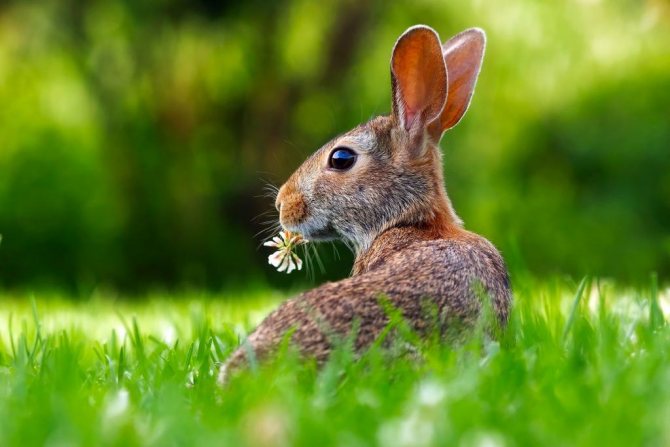
How to properly skin a hare
A hare is processed completely differently from a large animal, such as a moose. They do this by weight and begin to remove the skin from the hind legs, tying each one separately. But, first you need to empty the animal’s intestines - holding the carcass by the head or ears, you need to move it along the stomach several times in the direction of the tail. If there are several trophies, you should never stack them on top of each other - the fur will be irrevocably damaged. Optimal transportation is suspended on hooks by the hind legs.
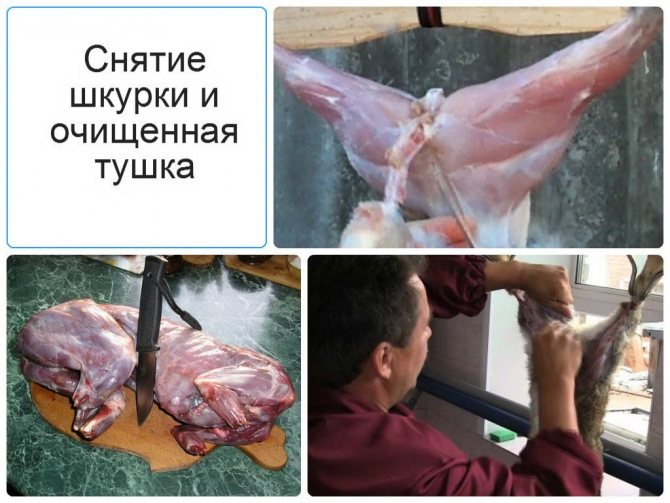
Hare cutting
First of all, one of the paws is cut off under the heel, leading this cut to the anus. Then do the same with the other paw. The next important point is to carefully trim the skin around the anus and genitals and completely remove the skin from the hind legs. The tail is cut to a third from where the vertebrae end.
The skin is carefully removed from the front paws with your fingers, cutting the tendons with a knife. Next they proceed to the head - here the skin must be removed along with the ear cartilage, nose, mustache and eyelashes. The claws are also trimmed.
Skinning process
How to butcher a hare while hunting and is it worth it?
It is best to skin this animal right on the spot; most often, many hunters do this.
How to properly butcher a hare without ruining its skin? This point is also interesting for many novice hunters.
Firstly, protect the animal’s skin and not stain it with blood. Secondly, it is easier to do this in the forest than, for example, in a residential building. Butchering a hare at home is not only extremely inconvenient, but also uncomfortable.
Expert opinion
Tarasov Dmitry Timofeevich
Master of Sports in mountaineering. Author of scientific articles on the topic of survival in the wild
However, before butchering this animal, it is necessary to remove its skin. This is done in exactly the same way as when cutting the skins of domestic rabbits. It can be removed using a regular stocking, otherwise it is also called a pipe.
The skinning procedure itself is as follows:
- First of all, you need to hang the hare by its hind legs, this should be done approximately at eye level.
- Secondly, cuts should be made along the inside of the carcass. And you need to start from the knee joint on the hind legs and then move towards the anus.
- Next, in the area of the animal’s anus, it is necessary to cut off the skin with a knife and remove it from the tail, and then from the hind legs. It is imperative to try not to touch the gallbladder with the knife, otherwise the meat will acquire an unpleasant taste, bitterness, and because of this it will no longer be suitable for consumption.
- The skin should be pulled off very carefully - the whole thing, moving downwards, and any tendons that come across should be trimmed with a knife.
- Well, in order for the front legs to be intact, it is necessary to free them only to the joints, and it is recommended to chop off the rest.
- Once you have reached the head, you need to make an incision in the skin approximately at the base of the ears, then cut around the eyes, leaving the eyelids. You should also cut the skin of the lips near the gums and remove the nasal cartilage. If the hare's head is not required, it can be chopped off along with the skin.
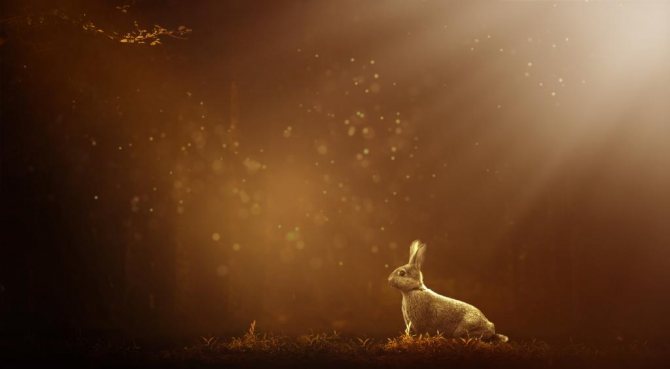
Slaughter
So, we have decided on the characteristics and qualities of the product; it’s time to discuss the correct process for preparing and cutting the meat itself.
Timing and principles of selection
Obtaining tasty and high-quality rabbit meat is directly determined by feeding and breeding methods. Until recently, it was believed that slaughter should begin at 4 months of an animal’s life. But success in the field of genetic engineering and the creation of many meat breeds with excellent early maturity, the development of new types of food (compound feed) and new feeding methods made it possible to begin slaughtering much earlier, starting from the second month of the animal’s life.
In order for rabbits to gain weight, it is necessary to properly formulate their diet. To do this, it is important to know the norms of daily feed consumption and types of feed. You will find all this in this article.
Rabbits in a cage
Small farms practice slaughtering animals in the third month of life, when they reach a weight of up to 2.5 kg without significant fat deposits. Animals during this period have a slaughter yield of up to 50% (the amount of meat per carcass). In hybrid meat breeds (for example, Californian), the yield is 5% higher.
It is worth considering that age does not benefit the quality of the animal’s meat. Since both the chemical composition of the product and its proportion of fat change. With age, the amount of liquid in meat decreases, the caloric content and energy value of the product, and the proportion of fat and protein in it increases.
Meat breed rabbits are capable of producing more meat than downy breeds. How to choose the right meat breed for breeding, advice on their breeding and maintenance can be found in this article.
Start of slaughter
Before preparing for slaughter, stop feeding the animal 12 hours before the procedure; it is also necessary to clean the animal’s skin with a regular brush, which will reduce debris and dirt during cutting.
Next you need to grab the animal by the hind limbs. The animal will resist at first, wait until it calms down, then strike the area behind the animal's ears with a regular stick. The spinal cord ruptures, after which the animal dies. You can tell that an animal is dead when it starts bleeding from the nose and ears.
A freshly killed specimen with traces of blood on its head
Alternative methods of killing:
- blow to the skull with a hammer;
- striking the parietal region or the area between the ears and eyes with the edge of the palm;
- an option not for the impressionable in the form of neck twisting, for which it is enough to grab the area from the back of the head to the chin with your right hand, twisting your neck to the side;
- an archaic version with an electric shock in the area of the animal’s temple.
Skin processing
Due to the fact that the white hare has a very thin skin, it must be handled with extreme caution, and you should try not to damage the flesh, because it tears quite easily.
To do this, it is recommended to remove all fat, all film and even blood, carefully scraping everything off with a knife. Next, you need to wipe the inside of the skin with a regular damp cloth.
Next, you should turn the skin with the fur out, and then wash off the blood and other contaminants from it. After this, you need to thoroughly wipe the fur with a dry cloth.
To do this, you need to turn the skin inside out and pull it onto a straightener in order to dry it. This term is considered to be an ordinary triangular wooden device for drying.
It is recommended to do this procedure at a temperature of about 20 degrees, always in a dry and warm room.
This is interesting: 4 real stories about people who survived on a desert island
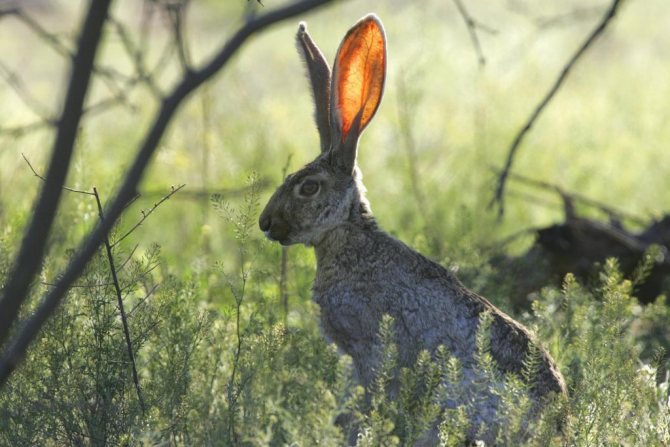
How to properly cut a rabbit carcass
It is necessary to gut a skinned rabbit carcass sequentially. Cutting does not take much time, but requires care and attention. First, the connections between the pelvic bones are cut. The genitourinary organs are carefully trimmed.
The flesh is cut along the white line of the abdomen. They take out all the insides by hand and pull them out together with the genitourinary organs. After this, the heart, liver, and stomach are taken out. If there is a head, then at this stage it is completely cut off. Next, the hind legs are cut off. The finished rabbit meat is sent for subsequent cutting into parts.
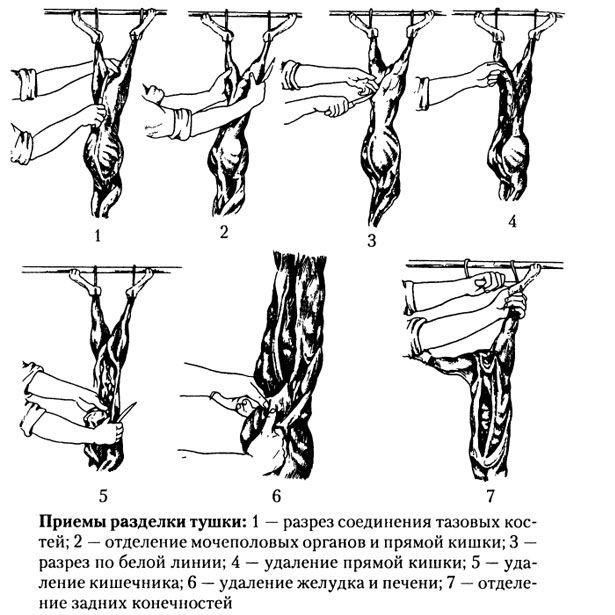
After cutting, it is recommended to keep the steamed carcass for several hours in a cool room, and only then cut it into small pieces for further use. This improves the taste and quality of dietary rabbit meat.
Skin preservation process
Very often, novice hunters wonder how to butcher a hare after a hunt without damaging it, and most importantly, be able to preserve its skin?
The most famous and at the same time fastest ways to preserve hare skins are wet-salted and dry-salted preservation.
The wet-salted method of processing the skin implies the need to rinse well, and you should not forget to periodically change the water, then you should carefully and gently squeeze it out, after which it is recommended to immerse it in the solution for about 8-10 days. Periodically, animal skins in the solution must be mixed.
Next, the skins should be removed from the solution, then thoroughly washed and dried away from various heating devices, fur side out.
For 1 skin you will need about 7 liters of this solution:
- Vinegar – 15 g 70%.
- Borax – 60 g.
- Aluminum alum – 20 g.
- Crystalline phenol – 1 g.
- Salt – 0.1 kg.
Dry salting is much easier; in this case, it is recommended to generously sprinkle the flesh with salt and thoroughly rub the salt into it. Next, cover everything with salt again and leave for another five days.
After this, it is recommended to stretch the animal’s skin for stretching and use a dry cloth to collect the brine, which will actively be released from the flesh when sprinkled with salt. After the animal’s skin becomes an even color, it is recommended to get rid of the salt and hang the animal skins to dry for about 10 days.
During drying, it is necessary to preserve the skins from insects. To do this, you can use a dense mesh and insecticides.
The text below contains step-by-step graphic illustrations of how to properly kill and butcher a rabbit. Therefore, if you are an overly compassionate dude, woman or vegan, close this page and forget about this topic altogether.
Expert opinion
Tarasov Dmitry Timofeevich
Master of Sports in mountaineering. Author of scientific articles on the topic of survival in the wild
If you have to survive in the forest, then look for berries and other vegetation. Anyone who is not afraid to get their hands dirty with blood can make a hunting spear and go in search of prey.
In general, for those who are lost in the forest and for beginning farmers, this article will be useful.
As a meat eater, you should have at least a theoretical understanding of how to do all the dirty work yourself: this is the process of killing, butchering and possibly cooking, if there is no woman nearby who will appreciate your qualities as a harsh provider who is not guided by the principle of “we eat what we eat.” that God sent."
Our body absorbs only 62% of beef, and 90% of rabbit meat. Rabbit meat is high in protein and low in cholesterol; the phosphorus it contains strengthens skeletal bones and has a beneficial effect on the skin and mucous membranes. For diabetics, this meat can help regulate blood glucose levels.
It is also good to use it as food for people in extreme professions: athletes, pilots, divers, people from areas contaminated with radiation.
Unlike most types of meat, such as chicken, pork and beef, rabbits are rarely (if ever) pumped with hormones and other similar unnatural crap, and their meat itself has a minimal amount of allergens, which allows rabbit meat to be classified as a dietary product.
One pair of rabbits can give birth to up to 50 rabbits a year, which, eating fresh greens in the fresh air, grow by leaps and bounds. Therefore, farmers grow them with joy and ease, and then people eat them with no less pleasure.
Skinning rules
A rabbit suitable for slaughter must weigh at least three kilograms. You need to slaughter a rabbit after reaching a certain age and after going through the molting period. You need to use a stocking to remove the rabbit skin. The animal carcass is tied by the hind legs, head down, and skinned. This is a labor-intensive process that requires skill.
The procedure can be divided into several stages:
- Incisions are made on the hind legs around the circumference of the hock joints. The incision continues along the inside of the leg and perineum. The tail is cut off.
- The skin is folded down, carefully avoiding the area of the genitals and tailbone. The main thing is not to accidentally damage the intestines and bladder and not spoil the fur with their contents.
- When the skin “lowers” to the level of the front paws, you can make circular cuts on the forearms or simply chop off the limbs. Some professionals manually separate the skin from the muscle by inserting a finger under the skin. Both of these methods are equally effective.
- The “stocking” is removed from the head, making a circular incision. If it is necessary to remove skin from the muzzle, special cuts are made around the mouth, tip of the nose and eyes. The ears are removed and the skin is completely pulled off. You need to remove the skin from the rabbit quickly so that the blood does not have time to bake.
The meat goes for cutting, and the fur goes for further processing.
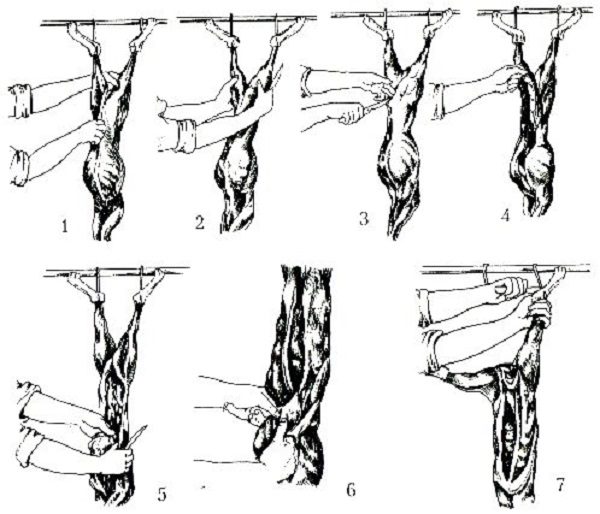
Pre-drying
After skinning, the skin is carefully cleaned from the inside to remove muscles and subcutaneous fat. This should be done quickly, before the meat dries and hardens. It is better to use a dull large knife with a square blade.
The skin needs to be stretched using special rules. They can be made of metal wire or wood.
The following types of rules are suitable for rabbits:
- adjustable;
- in the form of a fork made of slats;
- from one board;
- Rogulin from a branch of a bush or young tree.
It is very important to properly tension the hide. The limbs should be positioned symmetrically, the head should be exactly in the center, the legs should be straightened. The fur coat is pulled with little effort - stretching it too much can cause the fur to become very thin.
Dressing rabbit skins at home begins with proper drying. Fur should be dried in a well-heated room at a temperature not exceeding 30°C. You need to keep your future fur coat away from artificial heat sources, high humidity and drafts. In summer, you can dry rabbit fur outside in the shade.
You must not allow the skin to dry out - in this case, the raw material will deteriorate irrevocably due to the fragility of the skin. It is also necessary to monitor the safety of the fur: cats, dogs, rats can smell the remains of meat and fresh blood.

